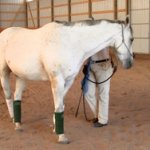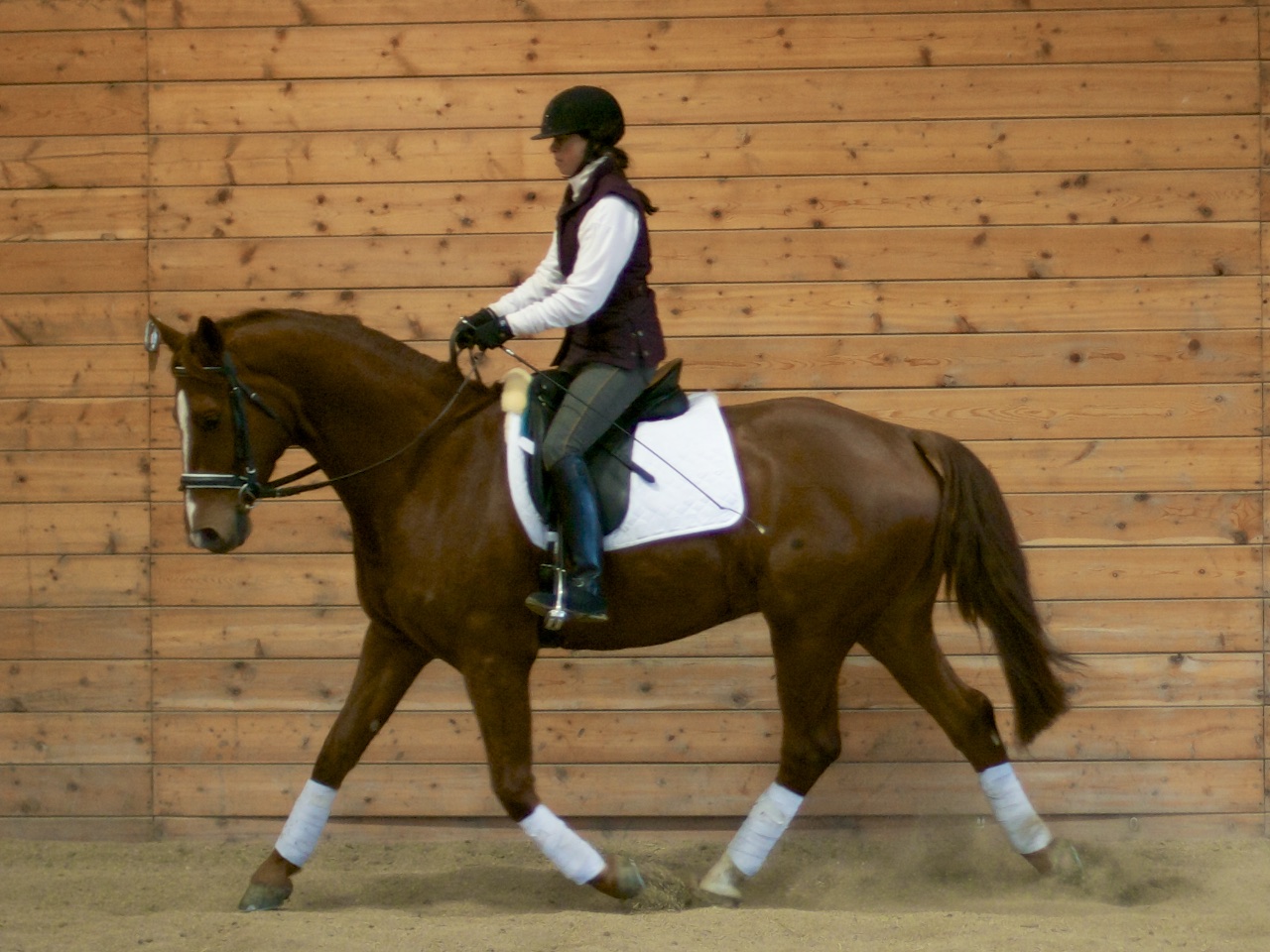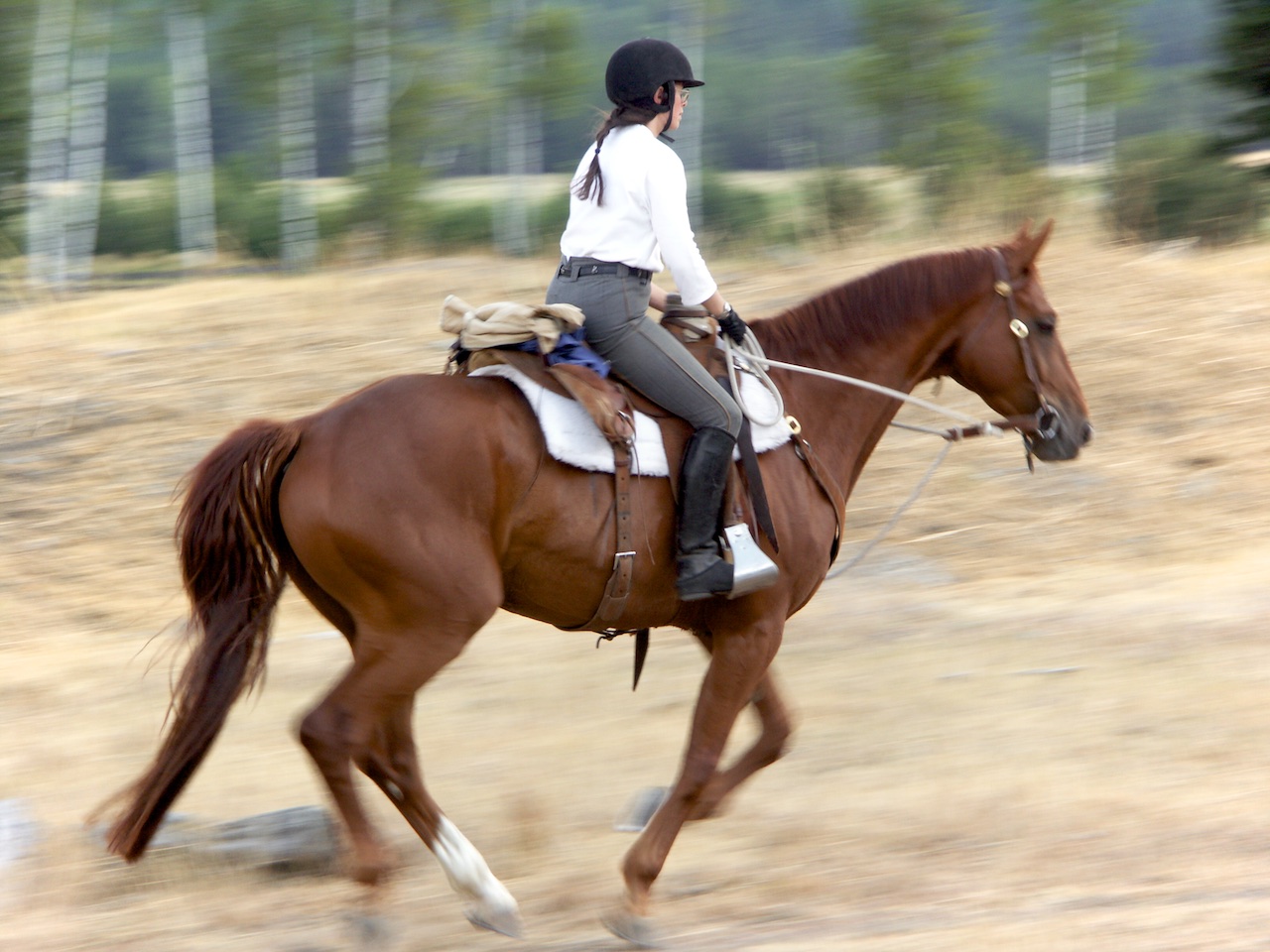Refined Performance Horsemanship Program
Improve your riding and your horse’s performance with this healthy mental and athletic training program
Refined Performance Horsemanship (RPH) is a training methodology designed to improve the performance and soundness of equine athletes and pleasure horses alike using a blend of mounted and unmounted instruction as well as groundwork. This program helps the “gentled horse” attain success in whatever discipline or activity he is involved.
A combination of natural horsemanship, classical principles, biomechanics, conditioning and schooling, RPH transforms a horse’s mind and body through the use of simple and logical work. The horse becomes quiet and willing, his body becomes balanced and through. RPH offers riders an understanding of how to help their horses and teaches them how to achieve these results.
This program is applicable to all disciplines.
Key Benefits
- Riders gain confidence and skill while improving the willingness and well being of their horses
- Riders of all disciplines and levels achieve a harmonious partnership with their horse
- Horses improve in athleticism, responsiveness, and mental attitude, preventing burnout and lameness
- Rider and horse develop a relaxed, through, balanced, and supple performance body
- Riders develop an understanding of why the horse needs relaxation, strengthening, suppling, and conditioning to become balanced and even
Who is Refined Performance Horsemanship for?
RPH is for horsewomen and horsemen in pursuit of a deep and productive partnership with their horses. RPH was developed to improve a horse’s mental and physical wellbeing. Horses and riders from all disciplines and training style backgrounds can incorporate RPH techniques in their training programs.
How is this different than how you’ve trained before?
RPH emerged from Karen’s 20 year study of the broad range of horsemanship principles, including natural horsemanship, classical principles, biomechanics, conditioning and schooling. Karen, founder of RPH, has applied these methods with successful results in various disciplines – from western to dressage to jumping.
Through study and practice, Karen refined each discipline to its core and extracted elements that combine to create a holistic approach to horse training that results in relaxed and willing minds and balanced and capable bodies.
RPH participants learn mounted and unmounted exercises that focus on developing muscular and skeletal foundations that are biomechanically healthy for the equine athlete. Once a horse is able to move freely, he becomes a more willing partner and he is capable of performing at a higher level while preventing rider-induced lameness issues.
After using RPH techniques, horsemen and women alike have experienced a partnership with their horses like they’ve never experienced before.
What are the active components of RPH?
The active components of the program include liberty work, groundwork, and mounted instruction with your horse, as well as unmounted exercises for the rider.
- The groundwork component incorporates Liberty, Natural Horsemanship, and Classical in-hand exercises designed following biomechanic principals to develop a mentally and physically sound equine athlete.
- The mounted horsemanship component achieves a harmonious partnership between horse and rider using balanced rider positioning and the effective use of the aids.
- The unmounted rider component utilizes unmounted exercises to help riders relax, improve balance and stamina, and develop suppleness and symmetry.
What are the core principles of RPH?
The core principles for the program focus on helping riders develop a healthy training programs for their equine athletes. The following principles are the foundation blocks of the program:
- Liberty and Groundwork
- Equine and Rider Biomechanics
- Classical Principles
- Conditioning and Schooling Plans
The Refined Performance Horsemanship draws on proven techniques of Natural Horsemanship and Classical Principles infused with the scientific principles of Biomechanics and Conditioning Physiology to help your equine athlete attain a higher level of performance for many years.
Liberty & Groundwork

Disengaging the haunches
Liberty and Natural horsemanship groundwork have been described as the philosophy of working with horses by appealing to their personal and herd instincts. Both liberty and groundwork are based on exercises and movements ttaht develop trust and a leader partnership with the horse. By focusing on mental and physical relaxation, I develop a trusting, leadership role with the horse. These principles encourage the horse to see the handler as their leader by having the horse “seek” the handler. One of the most important foundation pieces for successful bonding is equine mental relaxation for both the horse and rider. Relaxation is also one of the most important foundation pieces to encourage a horse to find a healthy posture from the inside out.
Read more… > Liberty Work > Groundwork
Biomechanics
Biomechanics includes the study of the functions of the body in relation to movement.
Equine Biomechanics
Why is the understanding equine biomechanics important?
“What is absolutely essential for the training of the horse is an understanding of the links between muscular function and the skeleton working in combination during the different phases of training and exercises. This applies to whichever type of equine activity has been chosen.” – Former Olympian, Klaus Balkenhol writes in “The Rider Forms the Horse”
For an equine athlete to remain healthy, the horse needs to have its body (and mind) built up over a significant period of time. To perform to its highest level of potential, the horse needs to be encouraged into a ‘healthy frame’ or ‘position’ that allows it to develop the necessary muscles for balance and throughness. When these biomechanically correct muscles have been developed, the equine athlete will be able to enjoy a great riding partnership for many years.
The goal is for the horse to regain the body position and balance it has when it is without the rider and to learn to move freely and easily under the rider’s weight. When the horse is able to retain this unrestrained way of moving, it relaxes. For relaxation, the rider and horse must find a place of balance. When the horse is in balance, then his motion can move without hindrance.
Scientific understanding of how a horse moves by the muscles and skeleton interaction can be applied to all equine exercises. All training time is enhanced and more effective if one understands which muscles need to develop for a specific discipline and how a horse needs to move to create that development enhances . Healthy and efficient movement in the horse can lead to greater performance and longevity.
Rider Biomechanics
An understanding of rider anatomy and biomechanics can lead to a better movement connection between the horse and rider. Riders can improve their own comfort and the comfort for their horses by becoming more supple, balanced, symmetrical, and fit. An example being: by learning to use specific muscle groups for different aids the rider can maintain relaxation throughout their body. By becoming aware of their own body’s symmetry, they can improve their horse performance by being more balanced and thereby not interfering with their horses balance. By having following hips and hands the rider does not interfere with the horse’s natural efficient movement and again helps to improve the horses performance.
Classical Principles
Classical exercises develop the horse’s suppleness, balance, and throughness. These exercises are based in moving the horse “back to front” in order to improve efficiency by creating impulsion from their haunches. “Back to front”impulsion is easier for a horse that is balanced and in a healthy posture.
Relaxation is also one of the most important foundation pieces to encourage a horse to find a healthy posture from the inside out.

Karen demonstrating self-carriage with forward reins.
Classical principles encourage the rider to follow the movement of the horse. In classical riding, a rider does not pull back or down with the hand. This hand movement can impede the efficient forward movement of the horse. Pulling on the reins to create a round downward posture in a horse can hinder the horse’s ability to push from behind. As well, the horse is unable to efficiently use their back muscles in forward movement. These scenarios can lead to soundness issues and less efficiency in the performance horse. Classical principles teach riders to support forward impulsion using “following hands.
The exercises used in dressage in-hand work include the:
- leg-yield, shoulder- in, shoulder-out
- half-pass
- turn-on the forehand
- longeing on a circle
- haunches in
- haunches out
Conditioning and Schooling Plans
Just like a human athlete, for an equine athlete to remain healthy, its body (and mind) must be conditioned over a period of time. An individualized conditioning and schooling plan is instrumental in establishing a strong physical and mental foundation for the equine athlete. Each discipline requires a different combination of mental control and neuromuscular coordination. A healthy conditioning (fitness) plan encourages maximum performance by inducing physiological and structural adaptations within the athlete. On the other hand, schooling exercises increase an equine’s motor control and mental discipline.
Conditioning Workouts
Different exercise workouts have different goals that should be in line with the goals of the chosen discipline.
Many different conditioning workout techniques are utilized to custom the exercise routine.
 These include:
These include:
- continuous training (long slow distance)
- interval training (exercise is broken up into short work times separated by rest intervals)
- sprints
- inertial drills (changes speed or direction)
- strength training
- overloading
By incorporating discipline specific conditioning for both the horse and rider, RPH encompasses this foundation piece to bring along the performance athlete.
Schooling Plan
Schooling exercises center around a horse’s mental and motor control. Therefore a schooling plan needs to take into consideration any specific coordination or mental challenges presented by a specific discipline. Examples would include: jumping, reining, and calf roping. Jumping requires a horse to learn to balance himself over a fence while reining and calf roping require a quick response from the horse off of riders leg and seat aids.
My schooling program incorporates the classical training scale in my schooling plans. I follow the classical scale that has been successfully used to encourage healthy progress in performance horses. Relaxation, balance and appropriate hand contact are at the foundation of the scale. Followed by throughness, impulsion, straightness, and at last collection. By progressively bringing the equine athlete along at an appropriate sustainable timeline, one is able to maintain the healthy mental and physical well being of the horse.
By following a performance plan, these proven foundation principles will help your equine athlete to attain the level of performance that you are seeking and help enable your equine athlete to continue at a performance level for many years.
The foundation blocks in RPH are based on are applied, real-life, proven, successful Natural Horsemanship and Classical principles. Underlying these foundation pieces within the program are the scientific principles of biomechanics and conditioning physiology. Overall this holistic approach will help the equine athlete to excel in all disciplines or activities.
Refined Performance Horsemanship can help improve the beginner to advanced rider and equine athlete. This holistic approach has successfully improved the athletic ability of hundreds of horses and the partnerships they have with their riders.

